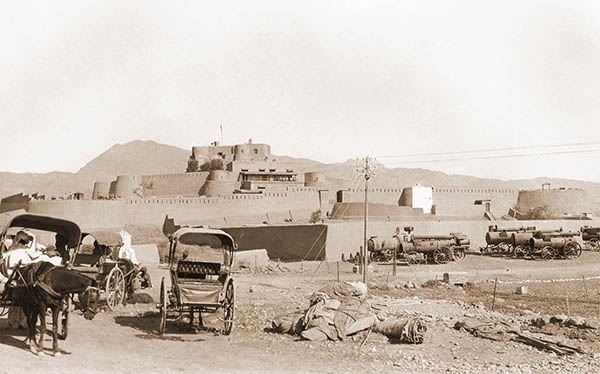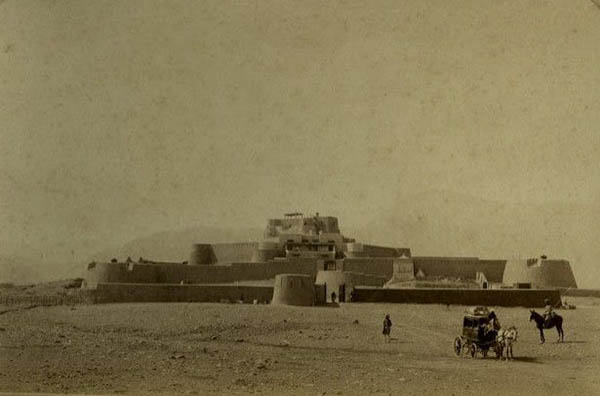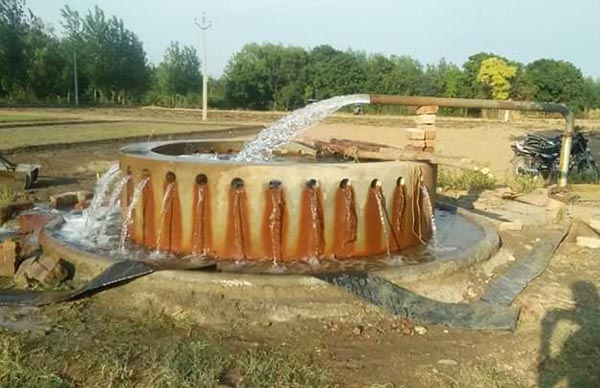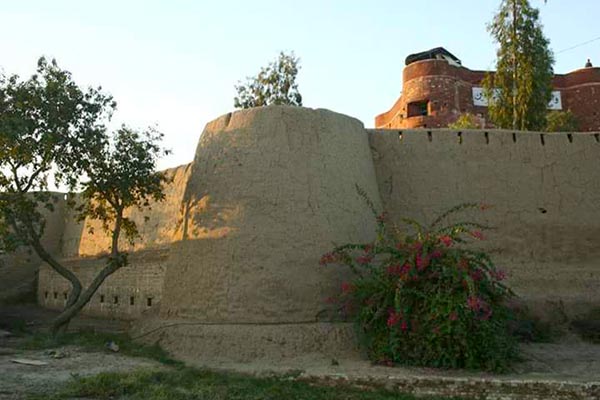Jamrud Fort, Peshawar, Pakistan

En octubre de 1836, Jamrud fue perdida por el Imperio Durrani afgano y conquistada por el Imperio Sikh. Sardar Hari Singh Nalwa (1791-1837), el conocido general sij, propuso construir un gran fuerte en Jamrud. La propuesta fue rechazada; sin embargo, el general Hari Singh Nalwa colocó los cimientos del fuerte que ha sobrevivido el 6 de mayo de 1893 en Sambat (18 de diciembre de 1836) y la construcción se completó en 54 días. "Jamrud ... conocido por su fuerte construido con muros de 10 pies (3 m) de espesor hacia 1836 por el sij Hari Singh Nalwa, uno de los generales de Ranjit Singh, originalmente se llamaba Fatehgarh para conmemorar la victoria sij sobre las tribus desunidas".
A principios de 1837, el nieto del gobernante de Sandhawalia Jat, Maharaja Ranjit Singh (1790-1839), el príncipe Nau Nihal Singh, se casaría. Hari Singh Nalwa envió sus fuerzas a Lahore para esta celebración histórica. En ese momento, Fast, un inglés, anteriormente al servicio del gobierno de la India británica, pasó por Jamrud en su camino a Kabul. En el camino se encontró con Mohammad Akbar Khan, hijo de Dost Mohammad Khan. Cuando Akbar Khan se enteró de que el fuerte de Jamrud estaba desprotegido, decidió atacar.
La batalla entre los afganos y los sijs se libró el 30 de abril de 1837. La pérdida sufrida en esta batalla por los sijs fue realmente grande. Hari Singh Nalwa había enviado un llamamiento de ayuda al maharajá para que enviara refuerzos desde Lahore a toda prisa, sin embargo, los jefes de Dogra no remitieron su carta al maharajá. Los refuerzos no pudieron llegar a tiempo y Nalwa dio su vida en el campo de batalla. Cuando llegaron los refuerzos, los sijs lograron mantener el fuerte y obligar a las fuerzas afganas a retirarse a Kabul.
In October 1836, Jamrud was lost by the Afghan Durrani Empire and conquered by the Sikh Empire. Sardar Hari Singh Nalwa (1791-1837), the well-known Sikh general, proposed to build a big fort at Jamrud. The proposal was opposed; nevertheless the foundation of the fort that has survived was laid by General Hari Singh Nalwa on 6 Poh 1893 Sambat (18 December 1836) and the construction was completed in 54 days. "Jamrud...noted for its fort built with 10 feet (3 m) thick walls c.1836 by the Sikh Hari Singh Nalwa, one of Ranjit Singh's generals, was originally named Fatehgarh to commemorate the Sikh victory over the disunited tribes."
Early in 1837, the Sandhawalia Jat ruler Maharaja Ranjit Singh's (1790-1839) grandson, Prince Nau Nihal Singh, was to be married. Hari Singh Nalwa sent his forces to Lahore for this historic celebration. At this time, Mr Fast, an Englishman, previously in the service of the British India Government, passed through Jamrud on his way to Kabul. En route he encountered Mohammad Akbar Khan, son of Dost Mohammad Khan. When Akbar Khan learnt that the fort at Jamrud was unprotected, he decided to attack.
The battle between the Afghans and the Sikhs was fought on 30 April 1837. The loss suffered in this battle by the Sikhs was indeed heavy. Hari Singh Nalwa had sent out an appeal for help to the Maharaja to dispatch reinforcements from Lahore post haste, however his letter was not forwarded to the Maharaja by the Dogra chiefs. Reinforcements could not reach in time and Nalwa laid down his life in the battlefield. When the reinforcements arrived, The Sikhs managed to hold the fort and force the Afghan forces to retreat back to Kabul.


